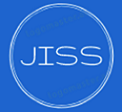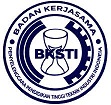Prevalence and factors associated with work related musculoskeletal disorders of patient transfer by nurses in health care
Abstract
Musculoskeletal disorders (MSDs), or muscle injuries, are some of the most common health problems worldwide. These disorders can have serious consequences, affecting physical health, mental well-being, time, productivity, and finances, often leading to significant losses. This study aims to identify the prevalence and factors linked to work-related musculoskeletal disorders (WRMSDs) among nurses who perform patient transfers in healthcare settings. A cross-sectional study was carried out from July to August 2023. The study included all nurses working in healthcare facilities during this period who met the inclusion criteria. Eligible participants were licensed nurses with at least one year of experience in the selected hospitals. Nurses who were unwilling to participate or unavailable during the data collection period were excluded. The study aimed to include the entire population of nurses working in the hospital, and the final sample was selected using purposive sampling. During the data collection phase, 40 nurses were available and met the eligibility criteria for participation. The findings revealed that gender is associated with musculoskeletal disorders among nurses [AOR: 2,110, 95% CI (0,165–27,017)]. Age [AOR: 0,000] and body mass index (BMI) [AOR: 0,345, 95% CI (0,077–1,538)] were also significant factors. Nurses over 35 years old and those who were obese had a higher risk of developing musculoskeletal disorders. Work experience more than 20 years was another factor linked to MSDs [AOR: 2,646, 95% CI (0,188-37,233)]. Additionally, education level and marital status were found to be associated with these disorders. In conclusion, a significant proportion of nurses involved in patient transfers experience work-related musculoskeletal disorders, with the lower back and neck being the most commonly affected areas. Key factors contributing to WRMSDs include gender, age, body mass index, work experience, education level, and marital status.
Keywords
Full Text:
PDFReferences
A. Yitayeh, S. Fasika, S. Mekonnen, and M. Gizachew, “Work related musculoskeletal disorders and associated factors among nurses working in governmental health institutions of Gondar town, Ethiopia, 2013,” Physiotherapy, vol. 101, p. e1694, 2015.
S. L. Tamers et al., “Envisioning the future of work to safeguard the safety, health, and well‐being of the workforce: A perspective from the CDC’s National Institute for Occupational Safety and Health,” Am. J. Ind. Med., vol. 63, no. 12, pp. 1065–1084, 2020.
M. Joshi and V. Deshpande, “Study of association between OWAS, REBA and RULA with perceived exertion rating for establishing applicability,” Theor. Issues Ergon. Sci., vol. 23, no. 3, pp. 313–332, 2022.
K. Kay, A. Evans, and N. Glass, “Moments of speaking and silencing: Nurses share their experiences of manual handling in healthcare,” Collegian, vol. 22, no. 1, pp. 61–70, 2015.
M. A. Yizengaw, S. Y. Mustofa, H. E. Ashagrie, and T. G. Zeleke, “Prevalence and factors associated with work-related musculoskeletal disorder among health care providers working in the operation room,” Ann. Med. Surg., vol. 72, p. 102989, 2021, doi: 10.1016/j.amsu.2021.102989.
S. Ziam, S. Lakhal, E. Laroche, J. Lane, M. Alderson, and C. Gagné, “Musculoskeletal disorder (MSD) prevention practices by nurses working in health care settings: Facilitators and barriers to implementation,” Appl. Ergon., vol. 106, p. 103895, 2023, doi: 10.1016/j.apergo.2022.103895.
A. Azadeh, S. Motevali Haghighi, Z. Gaeini, and N. Shabanpour, “Optimization of healthcare supply chain in context of macro-ergonomics factors by a unique mathematical programming approach,” Appl. Ergon., vol. 55, pp. 46–55, 2016, doi: 10.1016/j.apergo.2016.01.002.
G. Salvendy and W. Karwowski, Handbook of human factors and ergonomics. John Wiley & Sons, 2021.
E. M. Garzillo et al., “Healthcare workers and manual patient handling: A pilot study for interdisciplinary training,” Int. J. Environ. Res. Public Health, vol. 17, no. 14, p. 4971, 2020.
P. N. Erick and D. R. Smith, “Low back pain among school teachers in Botswana, prevalence and risk factors,” BMC Musculoskelet. Disord., vol. 15, no. 1, pp. 1–13, 2014.
S. Lee, J. H. Lee, and R. R. M. Gershon, “Musculoskeletal symptoms in nurses in the early implementation phase of California’s safe patient handling legislation,” Res. Nurs. Health, vol. 38, no. 3, pp. 183–193, 2015.
A. Chambers and N. Gill, “Work related musculoskeletal pain in general surgical trainees: extent of the problem and strategies for injury prevention,” Bull. R. Coll. Surg. Engl., vol. 102, no. S1, pp. e9–e14, 2020.
S. A. Trovó, D. F. Cucolo, and M. G. Perroca, “Transfer of patients in hospital units: impacts on nursing workload,” Rev. da Esc. Enferm. da USP, vol. 55, p. e0327, 2021.
K. Johnson, P. Swinton, A. Pavlova, and K. Cooper, “Manual patient handling in the healthcare setting: a scoping review,” Physiotherapy, vol. 120, pp. 60–77, 2023, doi: 10.1016/j.physio.2023.06.003.
J. Vinstrup, M. D. Jakobsen, A. B. Nielsen, and L. L. Andersen, “Ergonomic challenges in healthcare: mapping physical load during patient transfers using electromyographic field measurements,” Front. Public Heal., vol. 12, p. 1459595, 2024.
A. S. Perumal and M. C. M. OH, “The prevalence, risk factors and coping strategies of low back pain among nurses in public hospitals in Kota Kinabalu, Sabah: A cross-sectional study,” MJM, vol. 79, no. 5, p. 584, 2024.
N. S. S. Abdul Halim, Z. Mohd Ripin, and M. I. Z. Ridzwan, “Efficacy of interventions in reducing the risks of work-related musculoskeletal disorders among healthcare workers: a systematic review and meta-analysis,” Workplace Health Saf., vol. 71, no. 12, pp. 557–576, 2023.
X. Wang and Z. Cheng, “Cross-sectional studies: strengths, weaknesses, and recommendations,” Chest, vol. 158, no. 1, pp. S65–S71, 2020.
R. Tavakkol, E. Kavi, S. Hassanipour, H. Rabiei, and M. Malakoutikhah, “The global prevalence of musculoskeletal disorders among operating room personnel: a systematic review and meta-analysis,” Clin. Epidemiol. Glob. Heal., vol. 8, no. 4, pp. 1053–1061, 2020.
B. Gadhavi and Y. Shukla, “Prevalence of work related musculoskeletal disorders in farmers of Gujarat,” Ergonomics, vol. 6, no. 11, pp. 231–236, 2019.
L. López-Aragón, R. López-Liria, Á.-J. Callejón-Ferre, and M. Gómez-Galán, “Applications of the standardized Nordic questionnaire: a review,” Sustainability, vol. 9, no. 9, p. 1514, 2017.
S. Shaikh, A. A. Siddiqui, F. Alshammary, J. Amin, and M. A. S. Agwan, “Musculoskeletal disorders among healthcare workers: prevalence and risk factors in the Arab World,” Handb. Healthc. Arab World, pp. 2899–2937, 2021.
S. Yang, L. Li, L. Wang, J. Zeng, and Y. Li, “Risk Factors for Work-Related Musculoskeletal Disorders Among Intensive Care Unit Nurses in China: A Structural Equation Model Approach,” Asian Nurs. Res. (Korean. Soc. Nurs. Sci)., vol. 14, no. 4, pp. 241–248, 2020, doi: 10.1016/j.anr.2020.08.004.
G. Shahijani et al., “Prevalence of Musculoskeletal disorders among the Surgical and Anesthesia Technologists in Selected Hospitals of Isfahan in 2018,” J. Adv. Biomed. Sci., vol. 10, no. 1, pp. 1943–1950, 2020.
A. Jellad, H. Lajili, S. Boudokhane, H. Migaou, S. Maatallah, and Z. B. S. Frih, “Musculoskeletal disorders among Tunisian hospital staff: Prevalence and risk factors,” Egypt. Rheumatol., vol. 35, no. 2,
pp. 59–63, 2013, doi: 10.1016/j.ejr.2013.01.002.
I. K. Tosunoz and G. Oztunc, “Low back pain in nurses,” Int J Caring Sci, vol. 10, no. 3, pp. 1728–1732, 2017.
A. N. Bardak, B. Erhan, and B. Gündüz, “Low back pain among caregivers of spinal cord injured patients,” J. Rehabil. Med., vol. 44, no. 10, pp. 858–861, 2012.
H. Akbari, H. Akbari, M. Ghasemi, M. B. Hossein Abadi, and M. G. Fesharaki, “Assessing the Risk of Manual Handling of Patients and Its Relationship with the Prevalence of Musculoskeletal Disorders Among Nursing Staff: Performance Evaluation of the MAPO and PTAI Methods.,” Iran. Red Crescent Med. J., vol. 19, no. 2, 2017.
A. Richardson, G. Gurung, S. Derrett, and H. Harcombe, “Perspectives on preventing musculoskeletal injuries in nurses: A qualitative study,” Nurs. open, vol. 6, no. 3, pp. 915–929, 2019.
B. Roy, “Manipulation of a rigid body with a flexible sheet and its application to a rehabilitation bed.” Massachusetts Institute of Technology, 2003.
DOI: http://dx.doi.org/10.62870/jiss.v10i2.28265
Refbacks
- There are currently no refbacks.
 is supported by
is supported by








